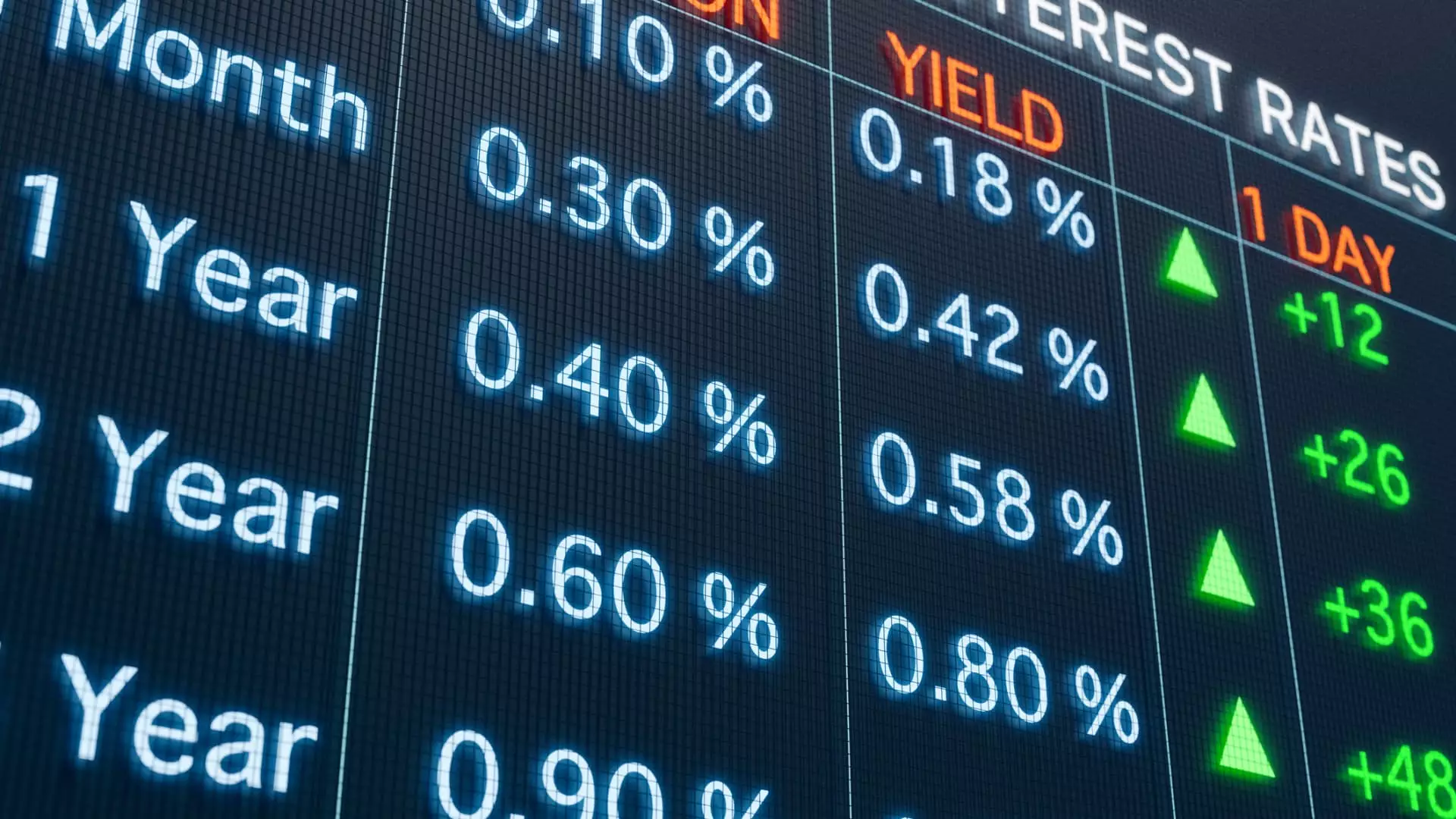In recent weeks, financial markets have experienced a paradox that exposes the fragility of our current economic policies. The Federal Reserve, in an apparent attempt to stimulate growth, announced a modest interest rate cut—its first of the year. However, in an unexpected twist, long-term Treasury yields surged, defying conventional expectations. This divergence reveals a fundamental misjudgment: the central bank’s cautious optimism may be misplaced, and its policies risk fueling long-term instability rather than securing sustainable growth. As bond investors retreat from their holdings, seeking higher yields, they are signaling that the economy may not be as robust as policymakers claim. The disconnect between the Fed’s actions and market responses underscores a critical flaw: the central bank’s linear approach to monetary easing ignores the complex dynamics of inflation, investor sentiment, and global economic interdependence.
Rising Yields: A Mirror to Investors’ Growing Wariness
While the Fed’s rate cut sparked initial enthusiasm and bullish stock rallies, bond markets tell a different story. The jump in the 10-year Treasury yield—spiking past 4.14%—and the 30-year hitting nearly 4.76%, suggests investors are skeptical about the efficacy of the Fed’s easing. Why is this the case? Simply put, bond markets are forward-looking, and their moves reflect apprehensions that the central bank is unwittingly loosening monetary policy amidst stubborn inflation. Despite the seemingly dovish move, long-term yields are rising, implying that investors anticipate inflationary pressures will persist or worsen. This perception flies directly in the face of official messages that the economy remains steady and that inflation will subside. Instead, bond traders are warning that the Fed’s confidence might be misguided, and that inflation, coupled with global uncertainties, will keep yields elevated despite monetary easing.
The Hidden Risks of Elevated Long-Term Yields
Higher long-term yields are not benign; they carry profound implications for everyday financial stability. For homeowners, rising mortgage rates—climbing back from recent lows—mean higher monthly payments and a constriction in housing affordability. The housing sector, already strained by elevated interest rates and economic headwinds, faces increased pressure. Lenar’s disappointing earnings and cautious outlook serve as a microcosm of a broader slowdown. The risk is that rising yields could choke off consumer spending on durable goods, housing, and autos, triggering a slowdown that the Fed’s policies aimed to prevent. Ironically, their attempt to encourage growth could backfire, creating a cycle of stagnation, or even recession, by making credit more expensive.
The Market’s Hidden Message: Beware of Overconfidence
Market analysts like Peter Boockvar and Chris Rupkey argue that the bond market is essentially “sending a message”—that the Fed’s easing might be premature or insufficient. Rising yields amidst a backdrop of aggressive rate cuts suggest discomfort with the trajectory of inflation and economic stability. Importantly, the bond market’s reaction reveals that investors are not convinced that rate cuts will have a lasting impact. Their skepticism underscores a broader warning: the current approach may be setting us up for a much more volatile economic environment. When long-term yields rise, it signals a lack of confidence in sustained growth, reflecting underlying fears of persistent inflation, global economic turbulence, or both.
The International Dimension and the Broader Outlook
Adding complexity to an already complicated scenario is the international arena. Yields on foreign bonds are also climbing, indicating that global economic uncertainty, rather than domestic policy alone, drives market sentiment. Central banks around the world are grappling with their own inflation challenges, creating a ripple effect that influences U.S. yields. This international interconnectedness makes it even more perilous for the Fed to dismiss warnings from the bond market. The reality is that a rising tide of yields globally could be the start of a broader trend that hampers economic growth, challenging the narrative that monetary easing alone can sustain a recovery.
The Pitfall of Overdependence on Short-term Fixes
The Federal Reserve’s focus on short-term rate adjustments oversimplifies the intricacies of macroeconomic management. The surge in long-term yields following rate cuts is a cautionary tale: monetary policy cannot be viewed as a one-size-fits-all solution. Instead, it reveals the dangers of overreliance on fiscal levers that may inflate asset prices temporarily but simultaneously sow the seeds for longer-term instability. As bond yields increase, borrowing costs on a range of essential financial products—mortgages, auto loans, credit cards—rise in tandem. This chain reaction risks choking off growth just when policymakers aim to sustain it. It’s a classic case of “short-term illusion” masking deeper structural issues, such as inflation persistence and global economic fragility.
The Unintended Consequences of Market Signaling
The bond market’s reaction is perhaps the clearest indicator that the Fed’s policies are missing the mark. Elevated long-term yields can be perceived as a form of silent protest from investors, who doubt the central bank’s narrative of stability and controlled inflation. This divergence hints at a disconnect that could escalate, provoking a cycle of volatility and increased borrowing costs. Ultimately, the market’s skepticism should serve as a warning: that complacency and overconfidence in simplistic monetary easing are dangerous. It emphasizes the importance of a balanced, nuanced approach to economic stewardship—one that recognizes the subtle signals from bond markets and global trends rather than relying solely on headline rate cuts and optimistic projections.
In scrutinizing the bond market’s behavior this week, it becomes evident that the U.S. economy faces a complicated path ahead. The rising long-term yields challenge the narrative of immediate recovery, pointing instead to underlying tensions that threaten to destabilize the fragile economic framework. Policymakers must heed these signals—if not, they risk steering the economy into an even more perilous future.

